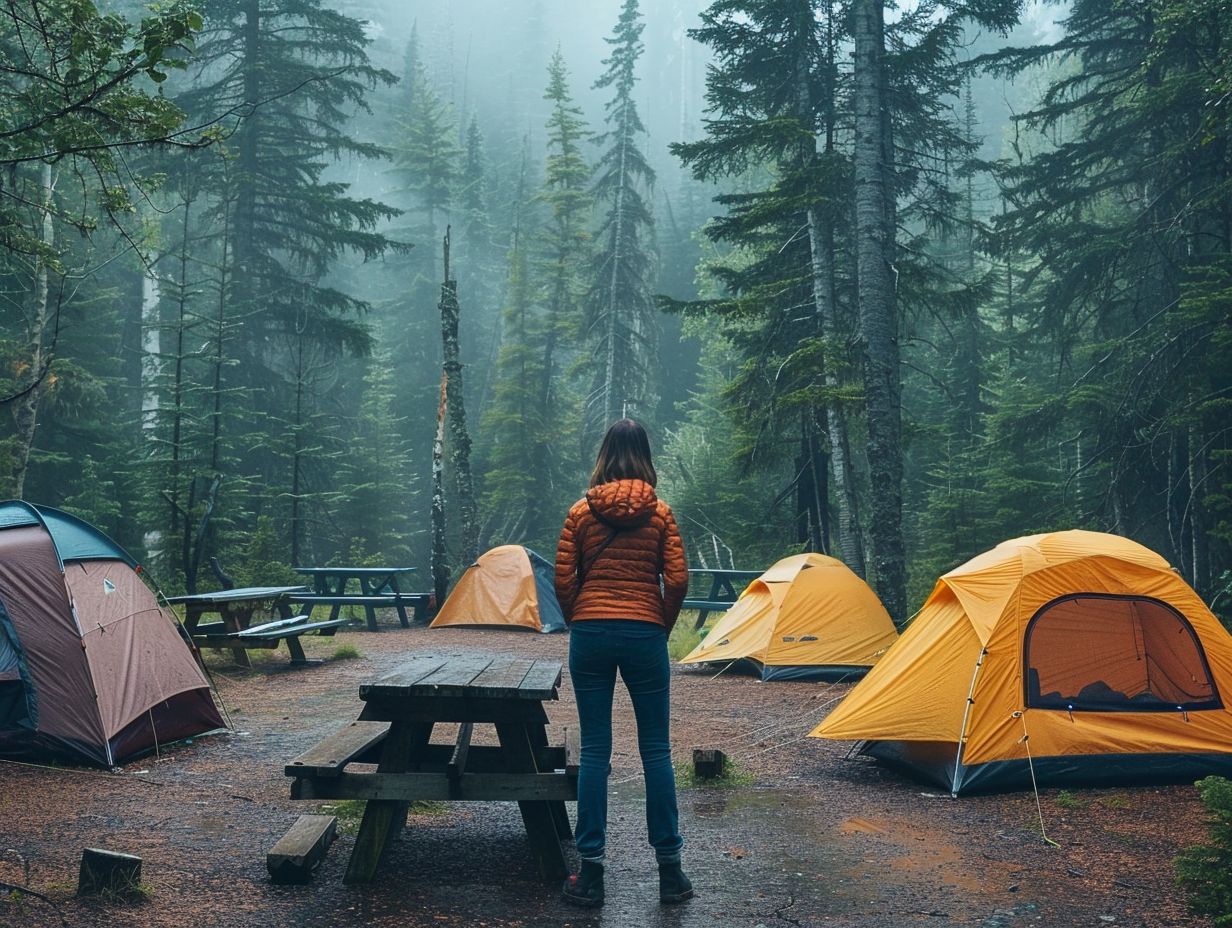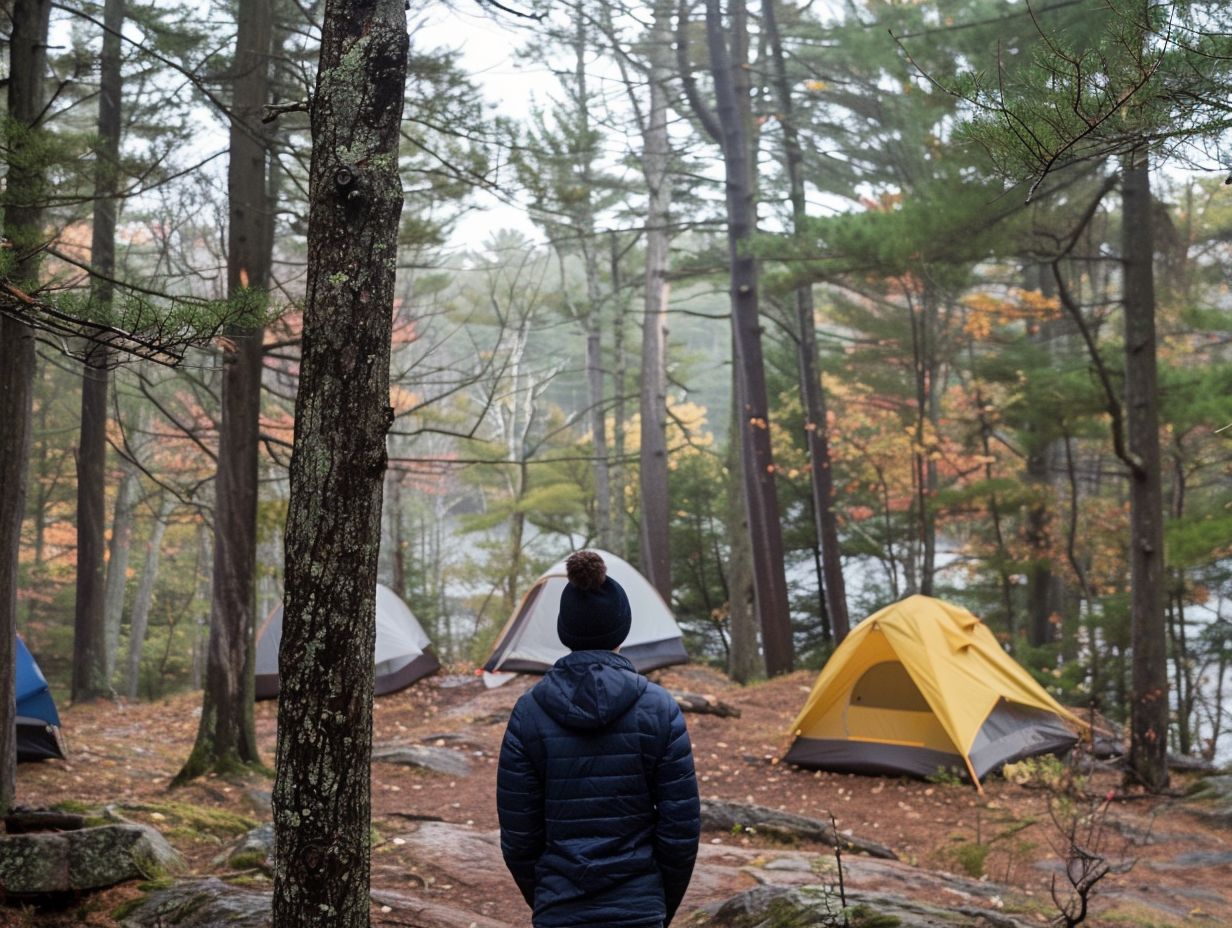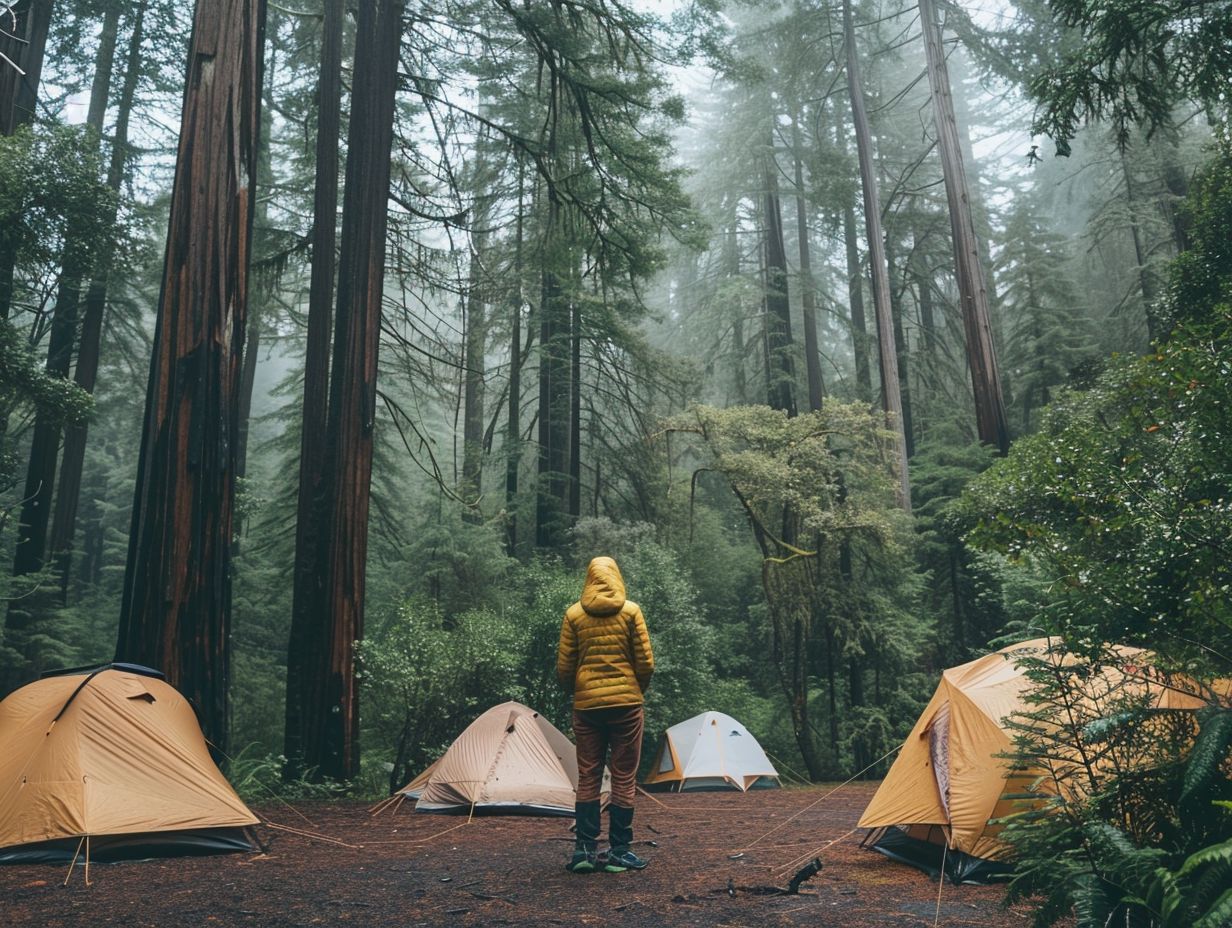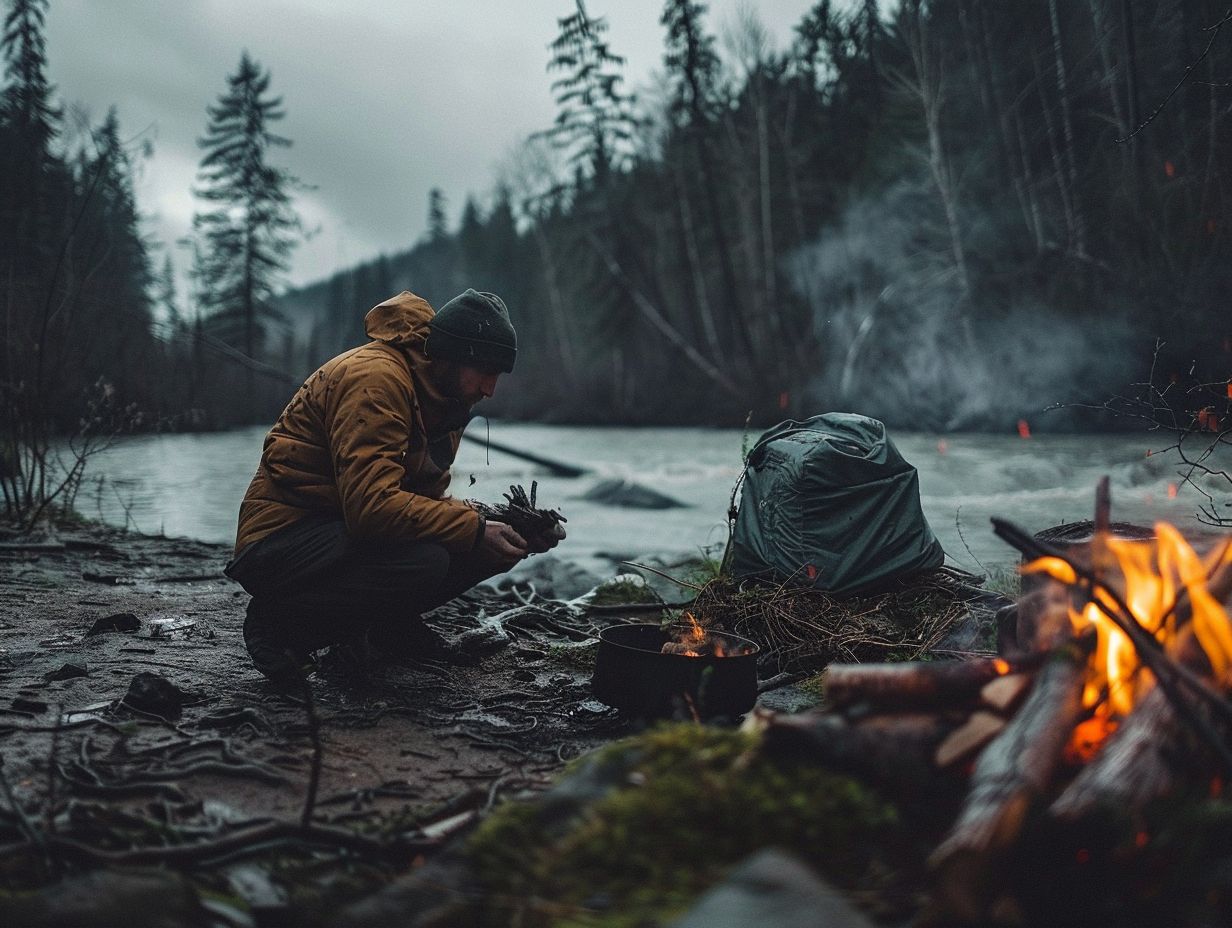Planning a camping trip but feeling overwhelmed by the choices of campsites available? Selecting the right campsite is essential for ensuring a successful and enjoyable outdoor adventure. Factors such as location, amenities, and weather can all influence your camping experience.
In this guide, we will delve into the key factors to consider when choosing a campsite, the various types of campsites you may encounter, and how to determine the most suitable option based on your requirements. Additionally, we will offer advice on preparing for your campsite, covering essential gear and setup to enhance your camping experience.
Prepare to embark on your next camping journey fully equipped and confident!
Key Takeaways:

- Consider location, weather, and amenities when choosing a campsite to ensure a comfortable and enjoyable experience.
- Understand the different types of campsites, such as tent, RV, and backcountry camping, to find the best fit for your needs.
- Take into account personal preferences, group size, and camping style to choose the perfect campsite and prepare with necessary gear and supplies.
Factors to Consider When Choosing a Campsite
When selecting the ideal campsite, you need to consider various factors that will impact your camping experience. Think about the proximity of trees for shade and shelter, availability of water sources, terrain conditions, and potential wildlife encounters to ensure a safe and enjoyable camping trip.
Having ample tree cover not only provides shade from the sun but also acts as a natural barrier against strong winds, enhancing your comfort during your stay.
Proximity to water sources ensures easy access to clean water for drinking, cooking, and cleaning purposes, reducing the need to carry heavy water supplies.
Understanding the terrain conditions helps in choosing suitable spots for setting up your tent, ensuring a level and stable surface.
Taking wildlife precautions, such as storing food properly and being aware of potential animal habitats, adds an extra layer of safety to your camping adventure.
Location and Accessibility
When evaluating a campsite’s location, you should focus on:
- Accessibility to water sources
- The presence of trees for shade
- Level ground free of rocks
- Adequate sunlight exposure
- Proper water drainage to prevent flooding during rainstorms
Having easy access to water sources is essential for meeting hydration needs and simplifying cooking and cleaning tasks. Sufficient tree coverage not only provides shade to escape the sun’s heat but also serves as a natural windbreak.
A campsite with level ground devoid of obstructions ensures a safe and comfortable sleeping area. Optimal sunlight exposure allows for drying wet gear and charging solar-powered equipment. Effective water drainage helps prevent puddles and potential hazards like slipping or mosquito breeding grounds.
Weather and Climate
When choosing a campsite, you should consider the local weather and climate conditions to prepare for potential weather hazards such as thunderstorms, strong winds, sunlight exposure, and flash floods that could impact your camping experience and safety.
Checking weather forecasts in advance and gaining an understanding of the typical climate patterns in the area can be highly beneficial in anticipating potential risks.
It is advisable to invest in sturdy tent pegs to secure tents in the event of high winds, pack appropriate rain gear for unexpected downpours, and select a shaded campsite to minimise sunlight exposure as practical strategies.
Educating yourself on evacuation routes and emergency protocols in the event of severe weather occurrences like flash floods can play a critical role in ensuring camper safety.
Availability of Amenities
When evaluating potential campsites, be sure to check for essential amenities such as nearby water sources, suitable spots for tent pitching, availability of firewood, and safety considerations related to wildlife presence.
These amenities play a crucial role in determining your overall camping experience. Access to nearby water sources ensures a convenient and reliable supply of water for drinking, cooking, and cleaning. Suitable tent pitch areas offer a comfortable and level surface for a good night’s sleep.
Availability of firewood enables you to build campfires for warmth, cooking, and creating a cosy atmosphere. Safety measures against wildlife encounters, such as properly storing food and rubbish, help ensure you can enjoy nature without unnecessary risks.
Types of Campsites

Campsites vary in type and location, ranging from traditional tent camping sites in designated areas to caravan camping spots with amenities, and backcountry or dispersed camping options in public lands and wilderness areas. Each type of campsite offers a unique experience for outdoor enthusiasts.
Tent camping sites provide a sense of immersion in nature, often located near walking trails and natural attractions. Caravan camping locations typically offer facilities such as electricity, water hook-ups, and waste disposal points for added comfort.
On the other hand, backcountry or dispersed camping in public lands allows for a more remote and primitive camping experience, ideal for those seeking solitude and a greater connection to the wilderness.
Understanding the features and considerations associated with each type can help campers choose the best option for their outdoor adventure.
Tent Camping
Tent camping appeals to outdoor enthusiasts like yourself who are seeking a deeper connection to nature. It provides opportunities for campers of all ages to enjoy the natural surroundings, explore brooks, navigate rocky terrains, and understand wildlife precautions.
Tent camping allows you to take a break from the fast-paced urban life and encourages moments of introspection and tranquillity. Engaging in tent camping activities can bring forth a sense of adventure and discovery as you set up your temporary home amidst the embrace of nature’s elements.
Whether it’s the soothing sound of water flowing in nearby brooks or the rugged beauty of rocky landscapes, each moment spent in the wilderness offers you a unique encounter with the environment.
Being mindful of wildlife precautions adds an element of responsibility and respect towards the natural habitats, ensuring a harmonious coexistence with the diverse fauna that inhabit these landscapes.
RV Camping
When opting for caravan camping, you are selecting a comfortable and convenient choice that caters to campers seeking amenities like water and electricity hook-ups. However, it is imperative to steer clear of high traffic areas, unhealthy trees, and disturbances to wildlife habitats in these locations.
Choosing meticulously maintained caravan campsites can guarantee a tranquil outdoor experience with the luxuries of home. These campgrounds not only offer necessary hook-ups but also provide a serene atmosphere away from bustling crowds.
By opting for spots situated away from high traffic zones and ensuring the well-being of surrounding trees, campers can contribute to the preservation of the environment’s natural beauty. It is critical to uphold respect for wildlife habitats, ensuring minimal disruption to local ecosystems while reaping the benefits of caravan camping.
Backcountry Camping
When engaging in backcountry camping, you should strive for a rugged and immersive outdoor experience. It is crucial to locate flat ground for setting up your tent. Uneven terrain can lead to discomfort during rest and may pose safety hazards. Therefore, it is essential to thoroughly examine the ground for rocks, roots, or any irregular surfaces that could affect the stability of your tent.
Managing water drainage is also critical to prevent potential flooding. Pitching the tent on a slight slope can help divert water away from the campsite. By being mindful of these factors, you can enhance your backcountry camping experience and ensure a safe and enjoyable trip.
Choosing the Best Campsite for Your Needs
When selecting the best campsite, you should undergo a comprehensive evaluation of your requirements, taking into account situational awareness, ecological impacts, flood risks, terrain features such as valley floors and hilltops, and safety measures to ensure a secure and unforgettable camping experience.
When assessing flood risks, it is essential to avoid setting up camp in low-lying areas or near water bodies that are prone to overflowing. While valley floors may provide flat terrain, they are more susceptible to flooding during heavy rains.
On the other hand, hilltops offer breathtaking views but are exposed to strong winds. The type of terrain significantly influences shelter, views, and proximity to water sources.
Emphasising safety by identifying potential hazards like loose rocks or close proximity to cliffs can enhance the overall camping experience.
Personal Preferences and Activities

Your selection of the most suitable campsite is influenced by personal preferences and planned activities. Factors like preferred camping locations, potential nocturnal visitors, appropriate sleep systems, physical impact considerations, wildlife encounters, and terrain characteristics should all be taken into account.
When you are choosing a campsite, it is essential to align your personal preferences with your planned activities to ensure a fulfilling outdoor experience. For instance, if you prefer being close to water, selecting a site near a lake or river can enhance your stay. Awareness of potential nocturnal visitors, such as bears or raccoons, allows you to prepare adequately by storing food properly.
Evaluating the suitability of your sleep system for the climate and terrain can significantly impact your comfort levels at night. Considering the physical impact of terrain features on your camping setup and potential interactions with wildlife is crucial for ensuring a safe and enjoyable trip.
Group Size and Camping Style
When selecting a campsite, you should consider your group size and preferred camping style. Take into account factors such as door orientation, adherence to the 200-foot rule, leave no trace principles, availability of firewood and water sources, and overall safety measures to enhance your camping experience.
Your group size is a critical factor in determining the ideal campsite location. Larger groups may require more space to accommodate their tents and activities. It is essential to choose a site that can comfortably fit the entire group while still following the 200-foot rule to minimise environmental impact.
Your camping style, whether it be backpacking, car camping, or RV camping, will influence the amenities needed at the campsite, such as access to firewood and water sources. Safety protocols should also be observed, such as avoiding low-lying areas prone to flooding and setting up away from dead trees, to ensure a secure camping environment.
Preparing for Your Campsite
Effective preparation for your campsite involves gathering necessary gear and supplies, setting up camp efficiently, maintaining cleanliness and safety measures, and being vigilant about wildlife precautions to ensure a smooth and enjoyable camping experience.
To begin, make a checklist of essential camping gear like a tent, sleeping bags, cooking equipment, and lighting. Ensure your supplies include ample food, water, first aid kit, and any other necessary items based on your location and duration of stay.
When setting up camp, choose a flat and sturdy surface, clear any debris or rocks, and assemble your tent properly to withstand weather conditions. Regularly tidy up your campsite, dispose of rubbish in designated areas, and follow Leave No Trace principles to preserve nature.
Implement safety protocols such as campfire management, emergency contact procedures, and proper storage of food to prevent wildlife encounters.
Necessary Gear and Supplies
For a successful camping trip, you need to ensure you have all the necessary kit and supplies. This includes items such as firewood, natural materials for construction, safety equipment, and provisions to protect yourself against wildlife encounters and sharp objects.
Additionally, it is crucial to bring along a reliable tent or shelter, suitable sleeping bags, cooking utensils, a first aid kit, and a method to purify water. Insect repellent, sunscreen, and a sturdy pair of walking boots are also essential items that should not be overlooked.
Furthermore, make sure to pack torches, spare batteries, a map, and a compass for navigation in case of emergencies. Being well-prepared with these items will ensure that you are equipped to handle any situation that may arise during your camping trip.
Setting Up and Maintaining Your Campsite
Properly setting up and maintaining your campsite involves strategic placement near water sources, away from potential insect breeding grounds, with adequate wind protection, and minimising ecological impacts to ensure a sustainable and comfortable camping environment.
When selecting a spot for your campsite, it is important to consider locating it within a reasonable distance of a water source for convenience in cooking, cleaning, and hydration. Positioning your tent away from damp or marshy areas can help minimise the presence of insects such as mosquitoes and ticks.
Utilising natural windbreaks or setting up wind-resistant barriers like rocks or vegetation can shield your campsite from strong gusts. It is crucial to practise Leave No Trace principles to protect the surrounding ecosystem and preserve the natural beauty of the area for future campers.
Frequently Asked Questions

What should I consider when choosing a campsite?
When choosing a campsite, it is important to consider factors such as location, amenities, and activities available. You should also think about the size and type of your camping group, as well as any specific needs or preferences.
How do I determine the best location for a campsite?
The best location for a campsite will depend on your personal preferences and the type of camping experience you are looking for. Some people prefer a more secluded location, while others may want to be closer to amenities and activities.
What amenities should I look for in a campsite?
Some amenities to consider when choosing a campsite include access to clean water, bathrooms, and fire pits. You may also want to look for sites with picnic tables, electricity, and nearby hiking trails or recreational activities.
What activities should I look for in a campsite?
The activities available at a campsite can greatly enhance your camping experience. Look for campsites with opportunities for hiking, swimming, fishing, or other outdoor activities that you enjoy.
How do I ensure the safety of my campsite?
When choosing a campsite, it is important to consider safety factors such as the terrain, weather conditions, and potential wildlife in the area. Make sure to also follow proper fire safety protocols and secure your food to prevent attracting animals.
What are some resources I can use to find the right campsite?
There are many resources available to help you choose the right campsite, such as online campground directories, apps, and reviews from other campers. You can also consult with park rangers or campground staff for recommendations and advice.



